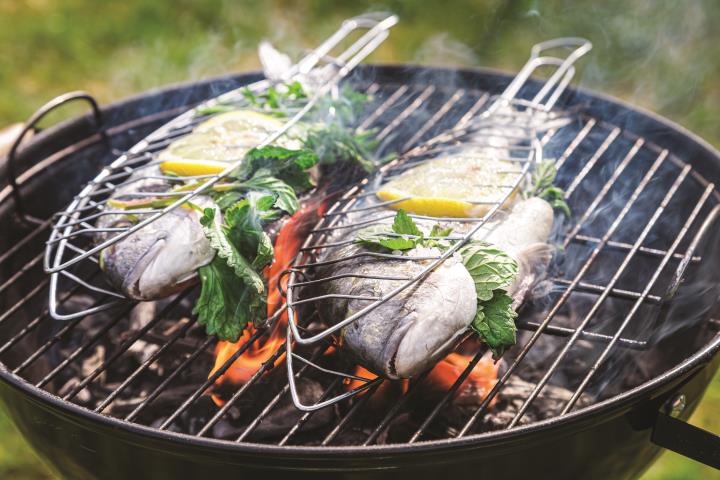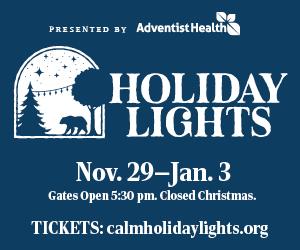Heatlhy News to Use: From Grimy to Gleaming: Get Your Grill Squeaky Clean
Strategies to Ensure a Squeaky Clean Grill this Summer
by Leslie carrol
Strategies to Ensure a Squeaky Clean Grill this Summer
by Leslie carrol
Jun 27, 2024

· Clean after each use. Cleaning a grill immediately after each use can make it easier to remove all the debris that can gather as foods cook. Fat, grease, melted cheese, marinades, and other substances can accumulate on the grill over time. Keep the fire going until after eating then scrape food and other debris off the grill.
· Oil the grates before cooking. A light coating of oil brushed onto the grill grates prior to cooking can reduce the likelihood that food sticks to the grill while it's being cooked. Food stuck to a grill can be difficult to remove, but the oil can reduce the likelihood that ground beef from burgers or chicken breasts will stick to the cooking surface.
· Deep clean the grill every so often. Grill grates may not need a deep clean after each use, but cleaning after heavy usage can remove debris that can accumulate over time. Follow the grill manufacturer's instructions regarding cleaning the grill. Some might suggest traditional dish soap like Palmolive is safe to use, while others might recommend particular soaps that can protect the long-term life of the grill. Make sure to clean out grease traps and ash pans as well.
· Use the right tools. Steel grill brushes are popular, but these cleaning tools can be unsafe. Steel brush bristles can break off during vigorous cleaning sessions, and they may get stuck on the grill and attach to food. Cooking experts note steel brush bristles can cause throat and/or abdominal issues if consumed. Alternatives to steel bristle grill brushes are widely available.
Grilling is a wildly popular summer pastime. Ensuring grills are clean prior to cooking can make foods more flavorful and decrease the risk of illness.
Fun Facts about Hot Dogs
July is National Hot Dog Month, and according to the National Hot Dog and Sausage Council, Americans will be consuming the infamous little red tubes of meat in record numbers this summer. The Council estimates that over seven billion hot dogs will be eaten by Americans between Memorial Day and Labor Day. During the July 4th weekend alone (the biggest hot-dog holiday of the year), 155 million will be consumed. Every year, Americans eat an average of 60 hot dogs each. They are clearly one of the country's most loved, but most misunderstood, comfort foods.
How’s Your Hydration?
You probably aren’t examining what’s left behind in the toilet after visiting the restroom. Most people just flush and go on with their business. But checking the color of your urine can be a good way to determine if you are getting enough fluids and avoiding dehydration. Generally, the darker the urine, the greater the likelihood that dehydration is occurring. Consult with this color chart to understand where urine color should fall for a healthy range.
Celebrate Smart: Keep Your Kids Safe Around Fireworks
You probably wouldn't let your child play with a blowtorch, right? Well, experts say letting a child handle 4th of July sparklers can pose some of the very same risks.
The Children's Hospital of Philadelphia says people often treat sparklers much too casually, even though they can burn at temperatures of about 2,000 degrees Fahrenheit. Children are allowed to hold and wave these red-hot metal rods like toys. Sparkler sticks pose a serious burn risk, and the sparks can cause additional burns and eye injuries, warns the CHOP. Young children who would not be trusted with other hot materials should not hold sparklers, warn health experts. Older children should be carefully supervised around sparklers and other fireworks.
Those who want to avoid any possible injuries on July 4th and during other summer celebrations would be wise to avoid sparklers in favor of safer forms of entertainment. Here are some ideas.
· Glow sticks light up in the dark and can be worn or waved around safely.
· Fill water balloons with a mixture of glitter and water. When the balloons pop, it is a festive display.
· Send children around with canned string products that they can spray on one another. If making a mess isn't an issue, shaving cream "fights" also can be fun diversions for children.
· Purchase battery-powered blinking lights, such as those sold at circuses or concerts. Kids can spend hours running around with them in hand. Less expensive flashlights purchased at a dollar store can create the same effect.
· Let children play with confetti cannons.
· "Snappers" or "poppers" could be an option if they are sold nearby. These are small noisemakers that explode and pop when they are thrown at a hard ground surface.
Sparklers may be festive and beautiful to behold, but they are not designed to be handled by children. Alternatives to sparklers are equally fun and much safer.
Basketball Named Most Dangerous Sport to Learn at Home
A new study has uncovered the sporting equipment that most frequently sends Americans to the hospital for treatment, with basketball appearing at the top.
The analysis by injury lawyers Bader Scott compared the most recent consumer product injury data from the CPSC’s Electronic Injury Surveillance System to sports commonly performed and practiced at home. This was to determine which sporting products caused the highest emergency department visits across America.
The data reveals that basketball is the most dangerous sport to learn at home. From finger fractures during passing to sprains and falls, basketball equipment sends more Americans to the emergency room than any other sporting equipment, leading to an estimated 314,000 injuries per year.
Injuries caused by basketball equipment may be so high because participants have minimal protection, unlike football or soccer. The data also reveals that people aged between 15-24 account for almost half of all basketball equipment injuries, at 144,000.









